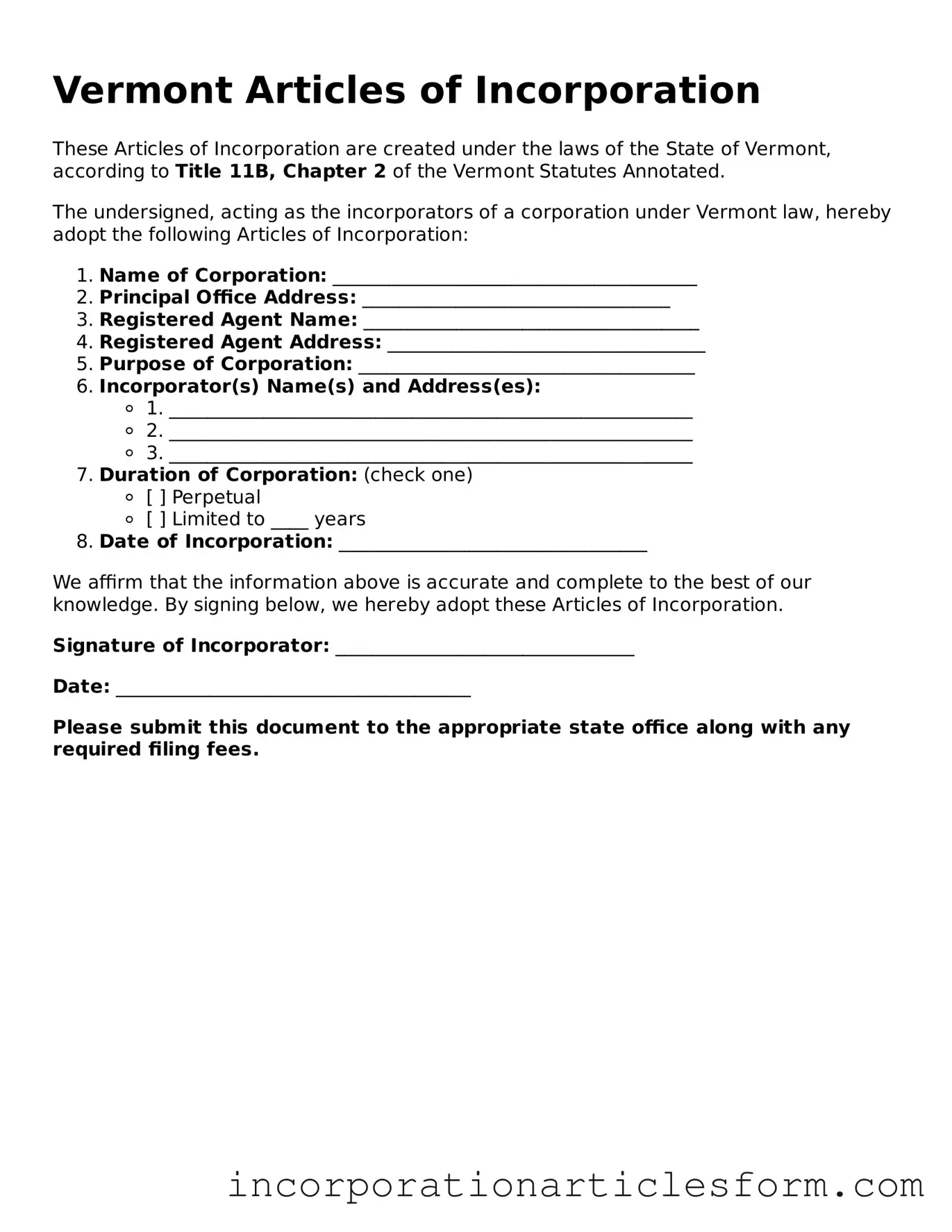The Vermont Articles of Incorporation form shares similarities with the Certificate of Incorporation, which is commonly used in many states across the U.S. This document serves a similar purpose, as it officially establishes a corporation and outlines essential details such as the business name, registered agent, and purpose. Like the Vermont form, the Certificate of Incorporation is filed with the state’s Secretary of State and is a crucial step in the formation of a legal entity.
Another document that resembles the Vermont Articles of Incorporation is the Articles of Organization, which is specifically used for Limited Liability Companies (LLCs). While the Vermont form is tailored for corporations, the Articles of Organization fulfills a similar role for LLCs by providing basic information about the business structure. Both documents require filing with the state and help to formalize the business entity, although they cater to different types of organizations.
The Bylaws of a corporation also bear similarities to the Vermont Articles of Incorporation. While the Articles serve as a foundational document for establishing the corporation, the Bylaws provide the internal rules and procedures for governance. Both documents are essential for the operation of a corporation, but while the Articles are filed with the state, the Bylaws are typically kept internally and guide the corporation's day-to-day management.
The Partnership Agreement is another document that parallels the Vermont Articles of Incorporation in terms of establishing a business entity. This agreement outlines the terms and conditions under which partners will operate a business together. Like the Articles, it sets the framework for the organization, but it is specifically tailored for partnerships rather than corporations. Both documents are crucial for defining the roles and responsibilities of the involved parties.
Incorporation also has its counterpart in the Nonprofit Articles of Incorporation. This document is used by organizations that aim to operate for charitable, educational, or social purposes rather than for profit. Similar to the Vermont Articles, it outlines the organization’s name, purpose, and structure, and is filed with the state to secure legal recognition. Both documents serve to formalize the entity's existence, though their objectives differ significantly.
The Certificate of Formation is akin to the Vermont Articles of Incorporation in that it is used to create a business entity, particularly in states that prefer this terminology. This document, like the Articles, contains vital information about the business, such as its name, address, and purpose. Both documents are essential for establishing a legal business presence and require state filing.
The Foreign Qualification Application is another relevant document. When a corporation formed in one state wishes to operate in another, it must file this application. It is similar to the Vermont Articles of Incorporation in that it provides necessary information about the corporation, ensuring compliance with the laws of the new state. Both documents are crucial for legal recognition, albeit at different stages of business operation.
Operating Agreements are also comparable to the Vermont Articles of Incorporation, especially for LLCs. While the Articles provide the foundational details needed to form the business, the Operating Agreement outlines the management structure and operational procedures. Both documents are vital for the successful establishment and functioning of the business, although they serve different purposes within the organization.
Finally, the Statement of Information can be likened to the Vermont Articles of Incorporation. This document is often required after the initial incorporation and provides updated information about the corporation’s address, officers, and other essential details. Both documents are necessary for maintaining compliance with state regulations, ensuring that the business remains in good standing.
